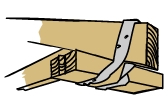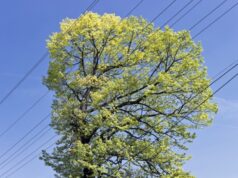
If you’re planning on building a pergola in a cyclone prone part of Australia, it will need to comply with the cyclone code. Find out what sorts of cyclone proofing measures are required.

There’s no denying that the destructive power of a cyclone can wreak terrible damage and put lives at risk if it hits in a populated area. There is enough footage floating around of the wreckage left in the wake of cyclones in Queensland and the Northern Territory to demonstrate the forces at play; the strong winds involved can tear apart structures that are not designed to cope with them.
The Building Code of Australia (BCA) outlines the requirements for building in potential cyclone areas, and recent cyclones have shown that buildings built to comply with this code have weathered the storms very well. Where failures occur, they are usually due to shoddy construction in newer buildings, or failure in buildings constructed prior to the introduction of the code.
Nowadays buildings are classified based on the amount of wind they’re likely to experience – either as C1, C2, C3 or C4 – with the higher classifications being those that experience the stronger winds.
AS1684.3-2010 – Residential timber frame construction in cyclonic areas
If you do live in a cyclone prone area, your decking or pergolas will need to comply with the relevant standard (AS1684.3 – 2010 – Residential timber-framed construction – Cyclonic areas). In a nutshell, this standard requires the measurement of potential loads at certain points on the timber frame, the assessment of the distance between battens, rafters and trusses, and requires specific types of fastenings, ties and brackets to ensure that structures are able to take the potential force of cyclonic winds.
The structure you build needs to be strong enough to withstand these kinds of forces so that it doesn’t disintegrate and become a potential missile. Pergolas with cladding in particular are likely to experience stronger forces, and will need greater reinforcement than open top pergolas. Pergolas and decks in cyclone prone areas need to be carefully assessed by qualified engineers to ensure that they adhere to the cyclone code.
Regular checkups and maintenance
The biggest problem with regulating for cyclones is that even if a construction has been built to code, it takes regular check-ups and maintenance to keep it compliant. It may be many years until a structure is tested under the winds of a cyclone, and any degradation or corrosion that has occurred may weaken the building to a point where it can’t withstand the load it was designed for. Things like termites, rust or rot can all compromise a pergola or deck, and it often only takes one element to fail for the structure to become completely compromised.
To find out more about wind ratings and local cyclone code requirements where you live or how to check your decks or pergolas for damage, contact the residential housing authority in your state or territory.





